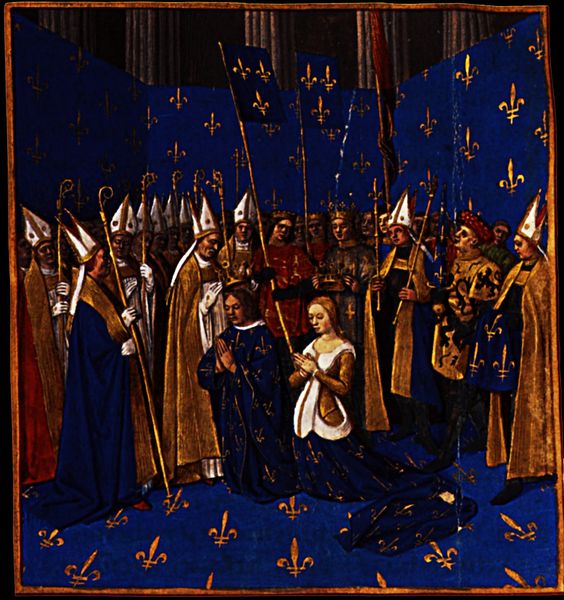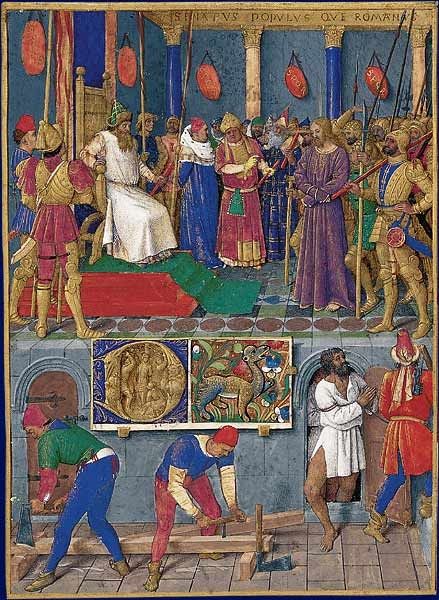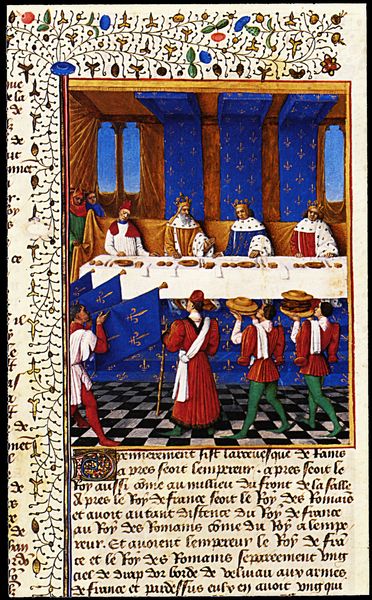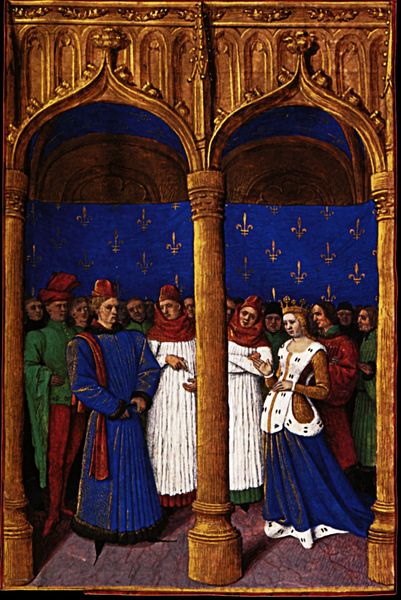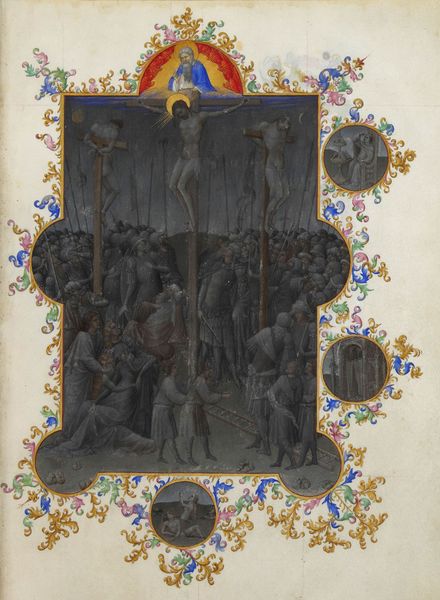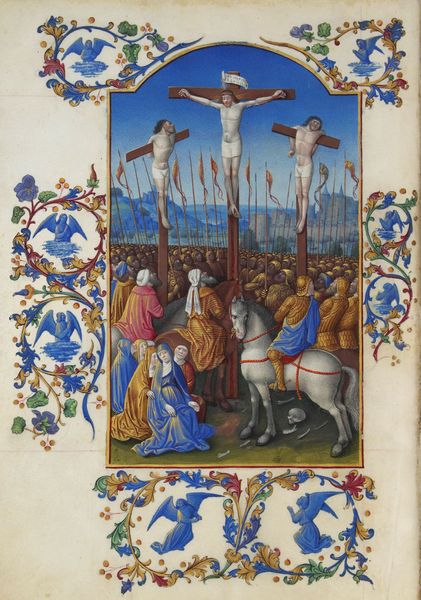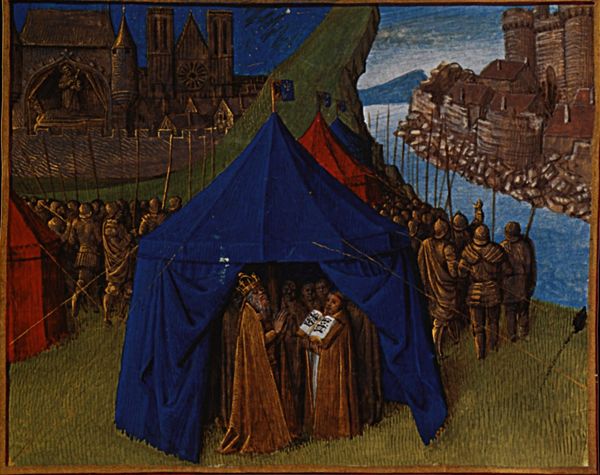
Coronation of Charles VI in 1380 in Reims 1460
0:00
0:00
jeanfouquet
Bibliothèque nationale de France (BnF), Paris, France
tempera, painting
#
portrait
#
medieval
#
narrative-art
#
tempera
#
painting
#
figuration
#
history-painting
#
international-gothic
#
miniature
Copyright: Public domain
Editor: This is "Coronation of Charles VI in 1380 in Reims," created around 1460 by Jean Fouquet. It’s a tempera painting, quite small I imagine, probably an illuminated manuscript. There’s a real sense of formality here, Charles kneeling before the bishops. What do you see in this piece? Curator: I see a powerful assertion of legitimacy, meticulously crafted for its time. Fouquet, though painting decades later, reinforces Charles VI’s reign. But let’s consider what’s *not* so obvious. Who is present? The king, the church… Where are the other power structures? The nobility? The people of France? Are they represented, or erased in favor of divine right and clerical power? Editor: That’s interesting, I hadn’t thought about the absent figures. I was focused on the fleur-de-lis pattern, which really dominates the scene. Curator: Precisely! The fleur-de-lis isn’t just decorative; it's a potent symbol of royal authority, visually reinforcing a specific lineage and claim to power. How does this repetitive symbol impact our reading of Charles’ power? Is it all-encompassing, or does it also reveal anxieties about maintaining that power? What’s supported through symbols as opposed to participation? Editor: So, it’s about what's being visually emphasized, and who gets left out of the frame, both literally and figuratively. That's a very political argument! Curator: Absolutely. Art serves power, challenges power, reveals power. Close looking reveals complex interactions between artists, patrons, and broader cultural contexts, don’t you think? Editor: Definitely. I'll never look at a fleur-de-lis the same way again!
Comments
No comments
Be the first to comment and join the conversation on the ultimate creative platform.

